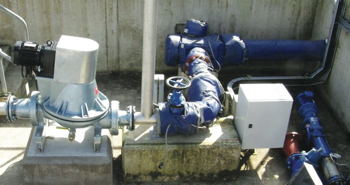Novel sludge pump control `cuts demand by 90%`
ABB has announced a new method for controlling sewage sludge pumps that, it says, will cut pumping demand by up to 90%. The technique, known as reactive pump control, uses a low-voltage AC drive in combination with an algorithm that measures viscosity for improved flow control.

According to ABB, the technology – developed by a UK-based company called Inverter Drive Systems – can achieve annual savings of more than £42,000 for a typical sewage treatment plant, through lower energy use, a reduced need for sludge transport vehicles, and less maintenance of the sludge pumps.
At present, sludge is usually pumped from settling tanks to holding or decanting tanks using progressive cavity pumps. It then pumped into road tankers for transfer to digesters.
Before the sludge can be pumped from the tanks, it needs to reach a certain viscosity, which is measured using sensors that determine the percentage of dry solids present in the liquid. The pumps need to be run often to prevent clogging, wasting energy and requiring frequent maintenance.
The excessive pumping also results in the holding tanks containing a relatively low percentage of solids. The storage tanks need regular manual decanting, and the road tankers take on more water than necessary, while further energy is consumed pumping the de-canted water back to the head of the works.
In the new system, the drive starts pumping after a time delay and stops pumping when the sludge viscosity drops to a set value. The pump then maintains a constant speed using the viscosity measurement to ensure that only the correct percentage of solids is pumped.
ABB says that the method will reduce operating and sludge transport costs, typically paying for itself in about ten months. It also helps to cut capital costs, removing the need for surge vessels, pressure relief valves, electromechanical timers, sensors, PLCs and instrumentation.
Another benefit is that the settling tanks do not need decanting before a tanker arrives, while the number of tankers needed is halved because the water content in the sludge is much lower than before.





